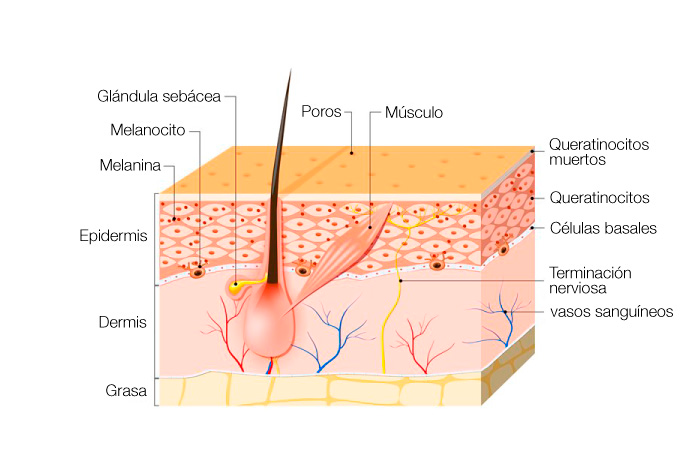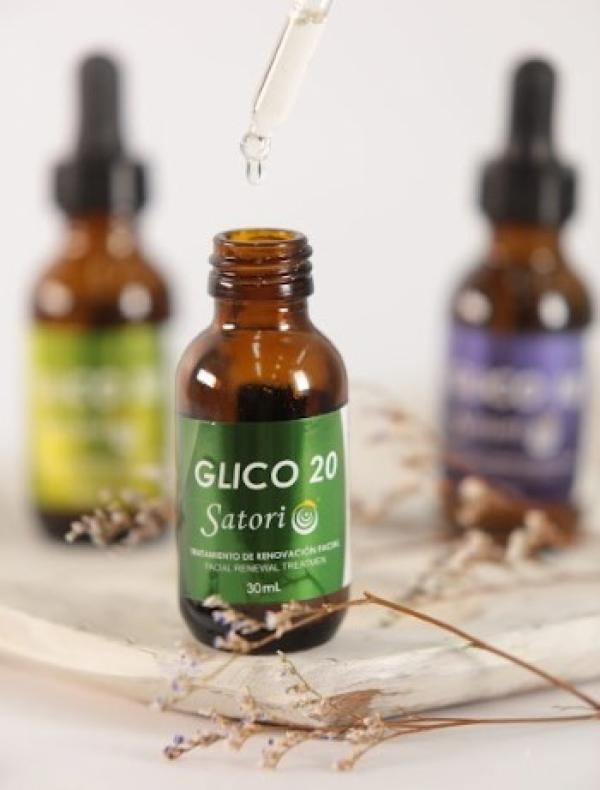
We talk about facial renewal when we remove dead skin cells or even when more abrasive procedures are performed that remove the epidermis in order to accelerate the skin's natural cellular process. This is achieved by the application of different treatments or products with acidic pH directly on the skin, by altering the natural pH of the skin we generate an exfoliative process (removal of dead cells or, as we mentioned above, detachment of the epidermis, the most superficial layer of the skin). This process is called facial renewal since we can achieve an improvement in the structure of the skin, obtaining excellent hydration, nutrition and exfoliation. In addition, it is also a great alternative to treat hyperchromia and melasmas.
Likewise, within facial renewal we find peeling which can be mechanical (through equipment such as diamond tips or ultrasonic peeling) or chemical (with cosmetic and medical acids). “To obtain optimal effects, several sessions are usually necessary, depending of the skin condition of each patient.” (Dermatological news- Dr Bassas, sf) The phototype and biotype of the skin must be taken into account.


The action that we generate in each type of skin initially depends on the need of the user or skin to be treated and of course on the variation in pH of the product, molecular weight and type of renewer. For their part, acids also called chemical peels have a classification according to the time they have been on the market and their evolution. These acids are known as hydroacids and are mainly classified as:
Alpha hydroxy acids: They are acids that are soluble in water, generally they are organic, fruit and vegetable. They enter the skin quickly, due to the size of their molecules, which are small; being of a minimum size, they can cause stinging or itching. These acids help with hydration, exfoliation and nutrition, they vary according to their percentage.
In this acid structure, there is:
In this acid structure, there is:
- Glycolic acid: It is extracted from sugar cane and has a very small molecule, which generates faster impregnation. Likewise, it generates rapid exfoliation (it can cause photosensitivity).
- Mandelic acid : contains a larger molecular weight which generates absorption in a more controlled manner; It acts as a hydration treatment and is a co-helper in acne treatments.
- Kojic acid: It provides benefits to hyperchromia treatments by causing an inhibition of melanin. It is considered a noble acid. However, you should be aware of the user's reaction and sun exposure during the first hours.
Beta hydroxy acids : this group includes acids that are soluble in lipids, generating greater exfoliation. They are mainly used for acne, keratosis and hyperkeratosis treatments; In this classification there is also the salicylic acid , especially indicated to treat acne.
Alpha keto acids: trichloroacetic acid belongs to this group, it is defined as a organic acid, which acts directly on the skin's proteins, generating deeper exfoliation, and is recommended for medical and dermatological use.
Tri Hydroxyacid : in this classification, there are: glycolic, malic and citric acids , which generate exfoliation and illumination of the skin, providing greater hydration to it.
Poly hydroxy acids: Defined as the latest generation acids, they contain a larger molecule, their action on the skin is slower and more controlled, and they generate little irritation. To this group, azelaic and lactobionic belong, Both are powerful antioxidants and depigmentants, they can be used in all phototypes and biotypes, since they do not generate photosensitivity.

It is worth highlighting the importance that exists when carrying out any procedure that contains the acids mentioned above, where You must have the experience of a professional person in its application, with the aim of carrying out the process in an effective way, avoiding unwanted effects on the skin.
Laura Isabel Mesa Arcila, Social Communicator
For Satori Beauty
Alpha keto acids: trichloroacetic acid belongs to this group, it is defined as a organic acid, which acts directly on the skin's proteins, generating deeper exfoliation, and is recommended for medical and dermatological use.
Tri Hydroxyacid : in this classification, there are: glycolic, malic and citric acids , which generate exfoliation and illumination of the skin, providing greater hydration to it.
Poly hydroxy acids: Defined as the latest generation acids, they contain a larger molecule, their action on the skin is slower and more controlled, and they generate little irritation. To this group, azelaic and lactobionic belong, Both are powerful antioxidants and depigmentants, they can be used in all phototypes and biotypes, since they do not generate photosensitivity.

It is worth highlighting the importance that exists when carrying out any procedure that contains the acids mentioned above, where You must have the experience of a professional person in its application, with the aim of carrying out the process in an effective way, avoiding unwanted effects on the skin.
Laura Isabel Mesa Arcila, Social Communicator
For Satori Beauty

